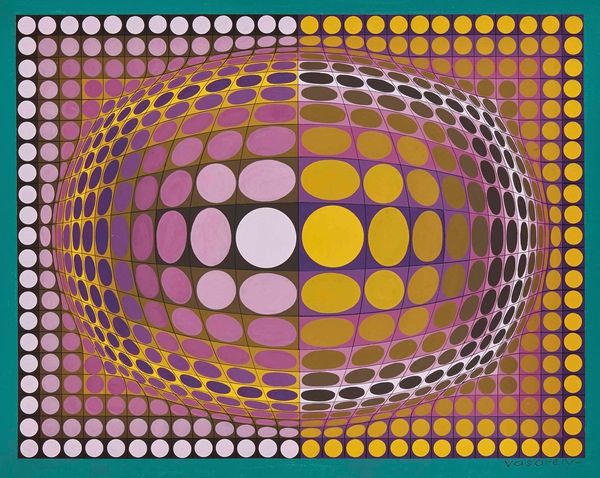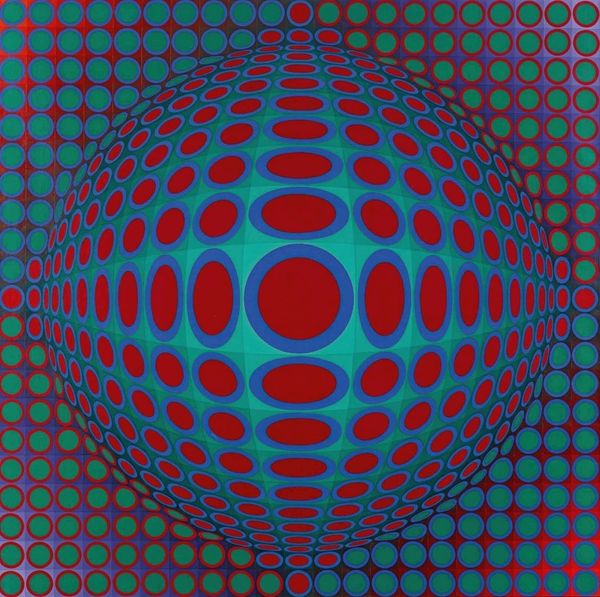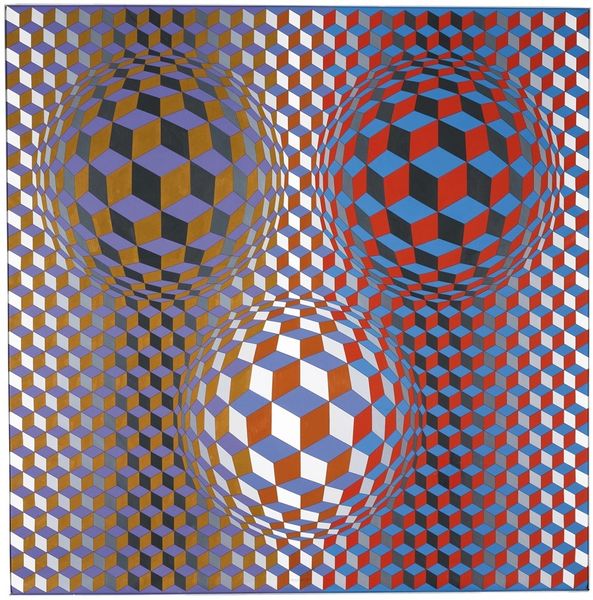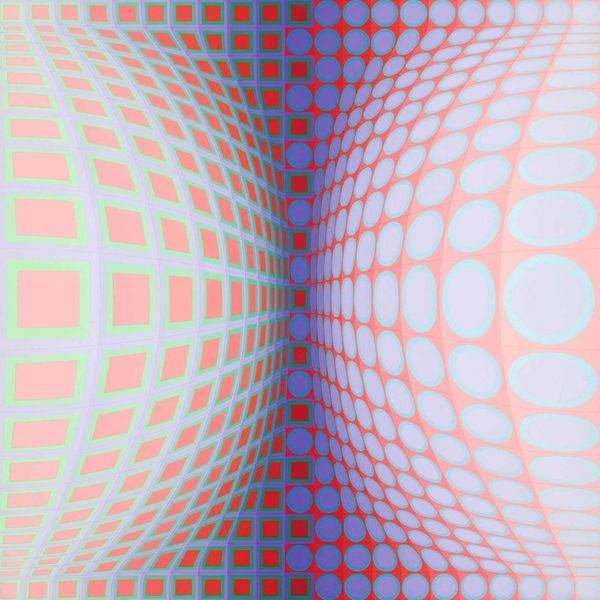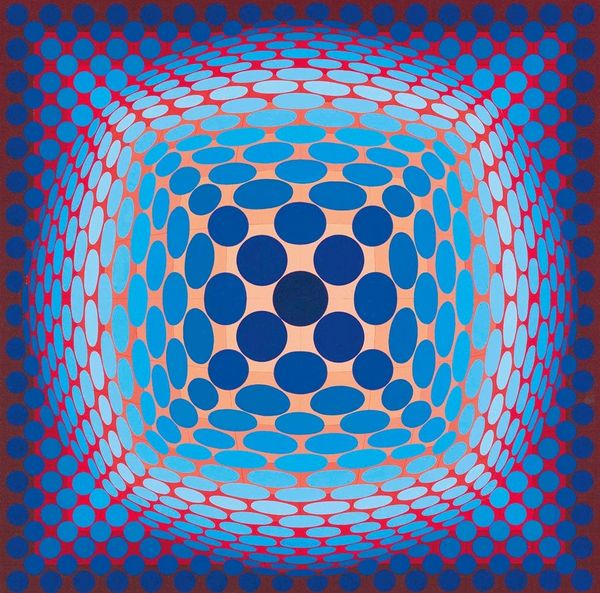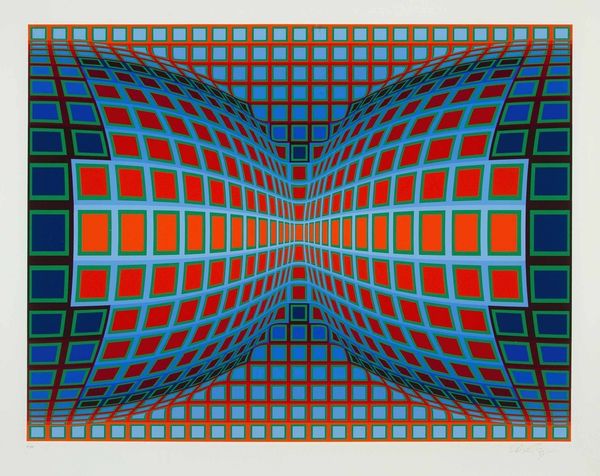
acrylic-paint
#
op-art
#
acrylic-paint
#
geometric pattern
#
geometric
#
abstraction
#
modernism
Dimensions: 150 x 150 cm
Copyright: Victor Vasarely,Fair Use
Curator: The piece before us, "Vega-Lep" by Victor Vasarely, created in 1970, immediately strikes one as vibrant, wouldn't you agree? Editor: It does, though my first impression is that it’s a bit dizzying! So many repeated circles. What can you tell me about how this was created? Curator: Vasarely was a pioneer of Op Art, and "Vega-Lep" is an acrylic painting. Note how he uses color and geometric forms to create this illusion of depth and movement on a flat surface. It's a deliberate manipulation of visual perception. Think about the cultural associations we have with certain colors and forms, how they trigger specific emotions. Editor: Acrylic, though. Such a mass-produced material. Was he intentionally pushing against the tradition of oil paints as the 'superior' artistic medium? I mean, it was 1970, Pop Art and a focus on accessibility in art was definitely present. Was he concerned with democratizing the means of production, the art world itself, perhaps? Curator: I see it more as Vasarely utilizing the most effective means to achieve his vision. The smoothness and vibrancy of acrylic certainly contribute to the visual impact. However, the grid structure, in which the circles interact, feels incredibly symbolic. It speaks to something beyond the pure sensory experience, doesn’t it? It feels like a symbolic field. Editor: Agreed, but acrylic also dries fast, which meant quicker turnaround times and mass consumption, too. But if the material is so linked with those qualities, how do we divorce it from the high/low art dichotomy? Also, is it really *that* effective? It’s garish. It hurts my eyes! Curator: Perhaps the initial shock is precisely the point? Its boldness and undeniable artifice push us to question the nature of perception and reality. Look at those receding forms—it's like a landscape built on visual code, each circle a pixel. I'm just saying there are clear symbols and cultural meanings being put to use here. Editor: All this technological and art historical baggage is housed in pretty, bright pigments of mid-grade plastic. "Vega-Lep" offers us an example of art using both those symbols and some interesting art production questions at once, however. It is, I have to concede, intriguing. Curator: Exactly! The point being, through this visual construction of combined historical images, something powerful comes through. Editor: I think so too. It presents a fascinating question about art's ability to synthesize symbols while democratizing materiality.
Comments
No comments
Be the first to comment and join the conversation on the ultimate creative platform.


